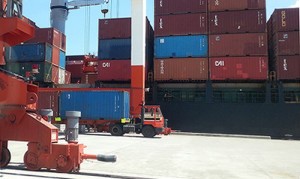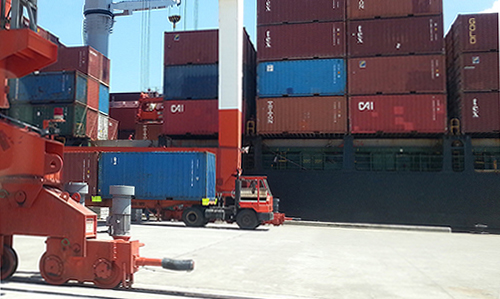 A total of 1,154 twenty-foot-equivalent units (TEUs) out of 3,000 containers found overstaying at the Manila ports have been transferred to Subic to decongest the country’s main gateways in time for the peak shipping season.
A total of 1,154 twenty-foot-equivalent units (TEUs) out of 3,000 containers found overstaying at the Manila ports have been transferred to Subic to decongest the country’s main gateways in time for the peak shipping season.
Chartered vessel MV Asterix left the Manila International Container Terminal (MICT) on August 28 carrying the first set of boxes to Subic, and was expected to be back in Manila last weekend to transfer the rest of the containers.
The Bureau of Customs (BOC), Philippine Ports Authority (PPA) and port operators International Container Terminal Services, Inc. (ICTSI) and Asian Terminals Inc. (ATI) are identifying several more boxes to be moved out of Manila.
“The shipping out of these overstaying containers is only one of the few measures aimed at unclogging the ports before the start of the peak season,” PPA general manager Juan Sta. Ana said in a press statement.
“This will enable the port of Manila to have sufficient port space to take in the influx of cargoes needed for the Christmas season that is expected to come in towards the end of next month,” Sta. Ana explained.
He said the measure will complement the proposed increase in storage fees for Customs-cleared overstaying containers aimed at encouraging shippers to pull out their cargoes immediately “instead of leaving (them) inside and (using) the ports as virtual warehouses.”
PPA held a public hearing August 26 on the proposed higher storage rates and gave stakeholders until September 10 to submit their position papers.
The PPA chief said that while they will remain a bit congested, “the productivity and efficiency of the two Manila Ports are slowly returning back to normal in time for the expected spike in cargo volume.”
MICT has an annual capacity of 2.5 million TEUs, with a surplus capacity of more than 1 million TEUs for the year as it has handled only about 1.1 million TEUs thus far, according to PPA.
Manila South Harbor (MSH), on the other hand, has an annual capacity of 1.3 million TEUs and has so far handled 800,000 TEUs for an excess capacity of about 500,000 TEUs more.
“While it seems that we have a shortage in yard space, it doesn’t mean we don’t have enough capacity. We have the capacity. We just have to work at a slower pace compared to last year,” Sta. Ana explained.
As of August 28, yard utilization at the two Manila Ports has risen to 90% following the long weekend, but is expected to return to 88% at week’s end as containers being released from the ports continue to climb from 4,200 TEUs a day to about 4,400 a day.
Moreover, MICT has increased its productivity with moves reaching 20 an hour, a significant improvement from the 10 to 12 moves an hour two months ago, PPA said.
MSH’s productivity has jumped to 15 moves an hour from eight moves an hour during the same period.
Meanwhile PPA along with port operators is trying to maintain the number of empty containers inside the ports at 12,000 TEUs even as they slowly take in the 20,000 containers held up at foreign ports.
As of end-June, the pile-up of laden containers at Manila ports totaled 85,000 TEUs and occupied about 104% of the yard, while the backlog of empty containers reached a high of 22,000 TEUs.
PPA said the congestion was caused mainly by the truck ban imposed by the City of Manila “that practically limited the movement of cargoes in and out of the ports during nighttime only.”
The port authority said the Cabinet Cluster on Port Congestion continues to appeal to the private sector to take advantage of the light traffic and low restrictions on Saturdays, Sundays, and holidays to pull out their cargoes. — Roumina Pablo





